Bluefin tuna and iberian pork, a love story in Atocha
Summary:
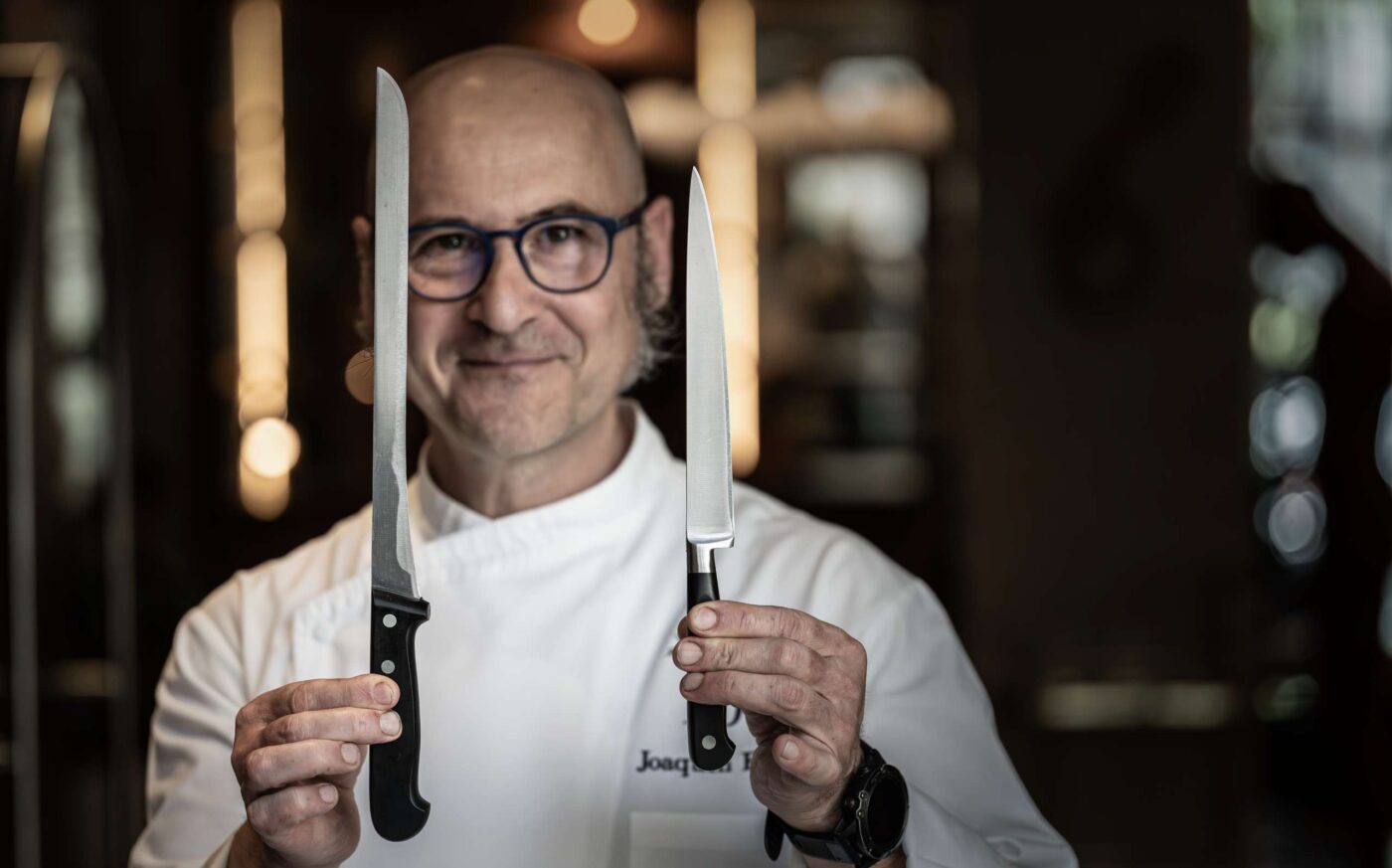
A logbook by Sensei Hiroshi Umi.
The finest bluefin tuna and the most outstanding Iberian heritage breed pork have more than a little in common. Because almost every last bit can be used –from the finest cuts to the most unexpected offal– they sometimes even exchange metaphors, with the blue titan of the oceans referred to as the pig of the sea (as defined even by Strabo back in Roman times), and the Iberian pig as the tuna of the dehesa woodlands.
Their succulence is likewise based on a wonderful and unique aspect intrinsic to their anatomy: the optimal level of fattiness between their muscles. This marbling, providing a flavour which delivers the quintessential umami sensation in the mouth, is sought after by breeders, producers, chefs, and above all by the diners who ultimately savour it.
It is this specific element which chef Joaquín Felipe aimed to celebrate during a month of culinary seminars at which Fuentes bluefin tuna and the most prestigious pork meat join forces in a pioneering venture. During the month of June, the Atocha 107 restaurant will serve as the venue for a unique symbiosis, with the Madrid-born chef combining parts and cuts of both these delights, applying the same culinary technique to them, to be served side by side on the plate.
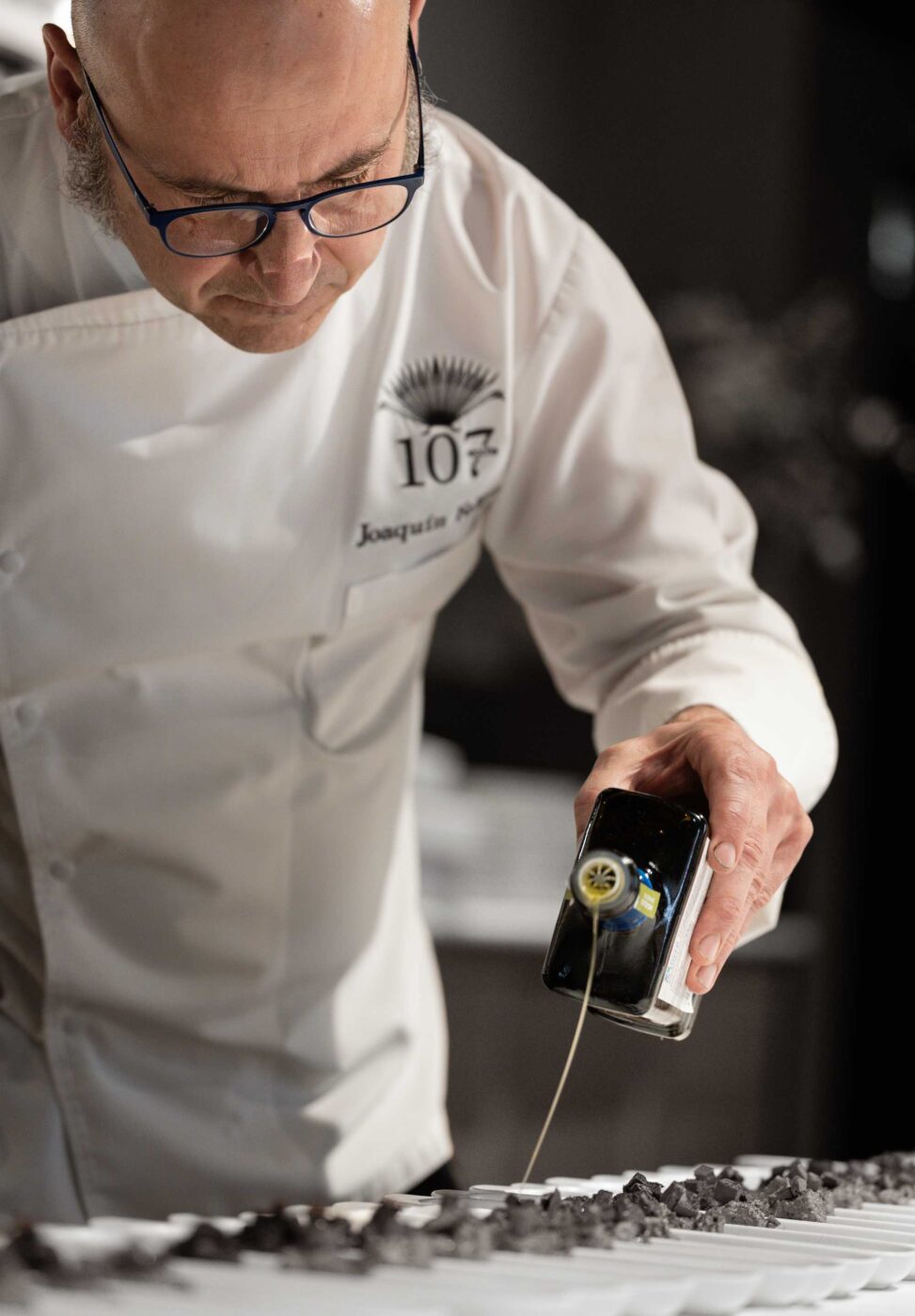
Trotters/fins. Bluefin tuna vs. Iberian pork
The idea here goes beyond creating a symbiosis on the plate by combining these two giants, but rather to weigh up, distinguish and discern flavours arising from one single method. In other words, one single recipe on the same plate, and two products side by side. “Iberian pork and bluefin tuna are two products that have accompanied me throughout my career. They have given me so much joy, in show cooking, conventions, serving them to patrons in dishes and recipes… I love both of them equally. And I was really excited about staging these seminars. I realised some time ago that bluefin tuna and Iberian pork have similar textures in some cuts, even similar colours. There are differences that lie in the flavour, but on the menu we have devised, people will be surprised in that regard,” the chef explains.
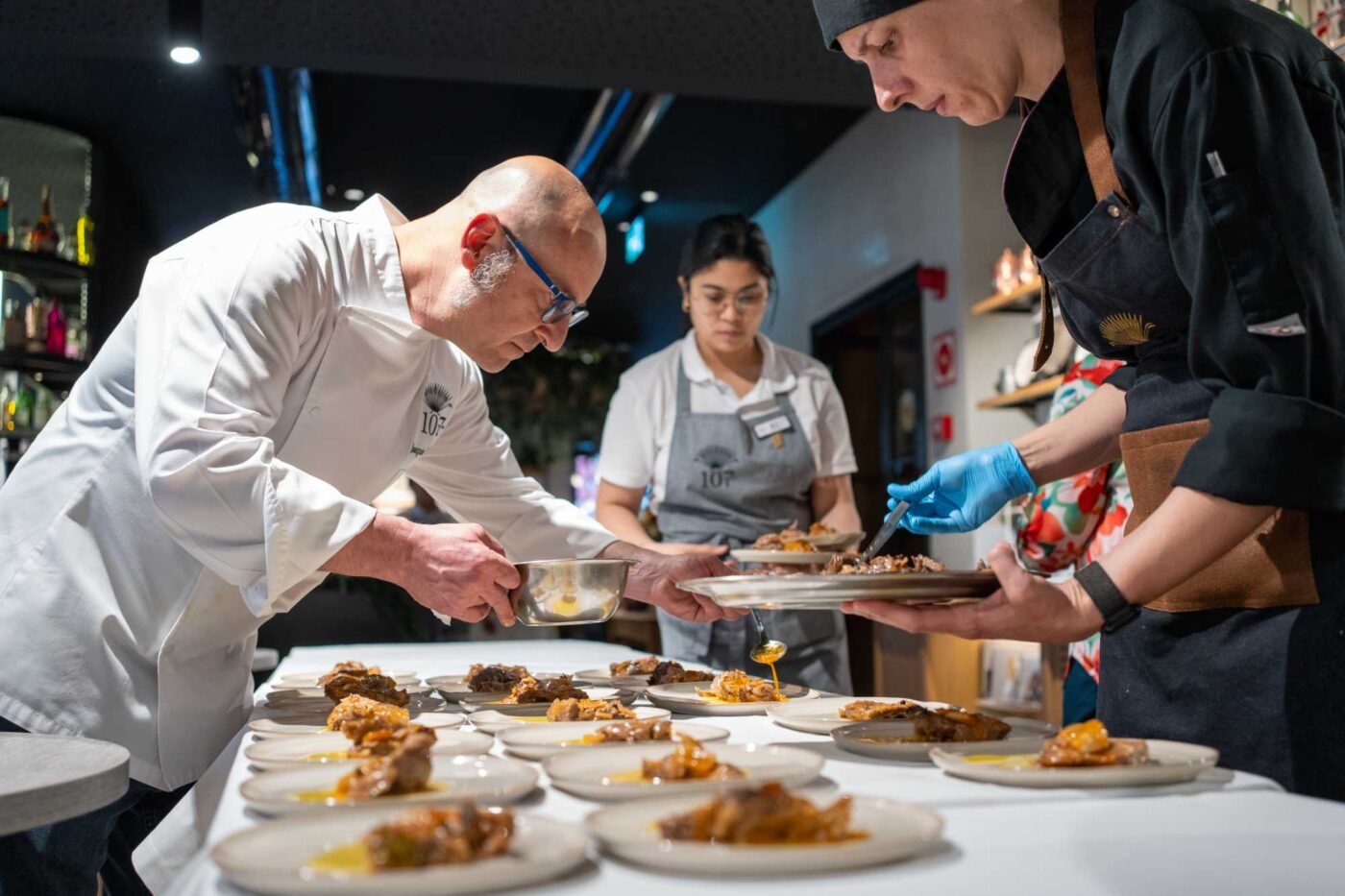
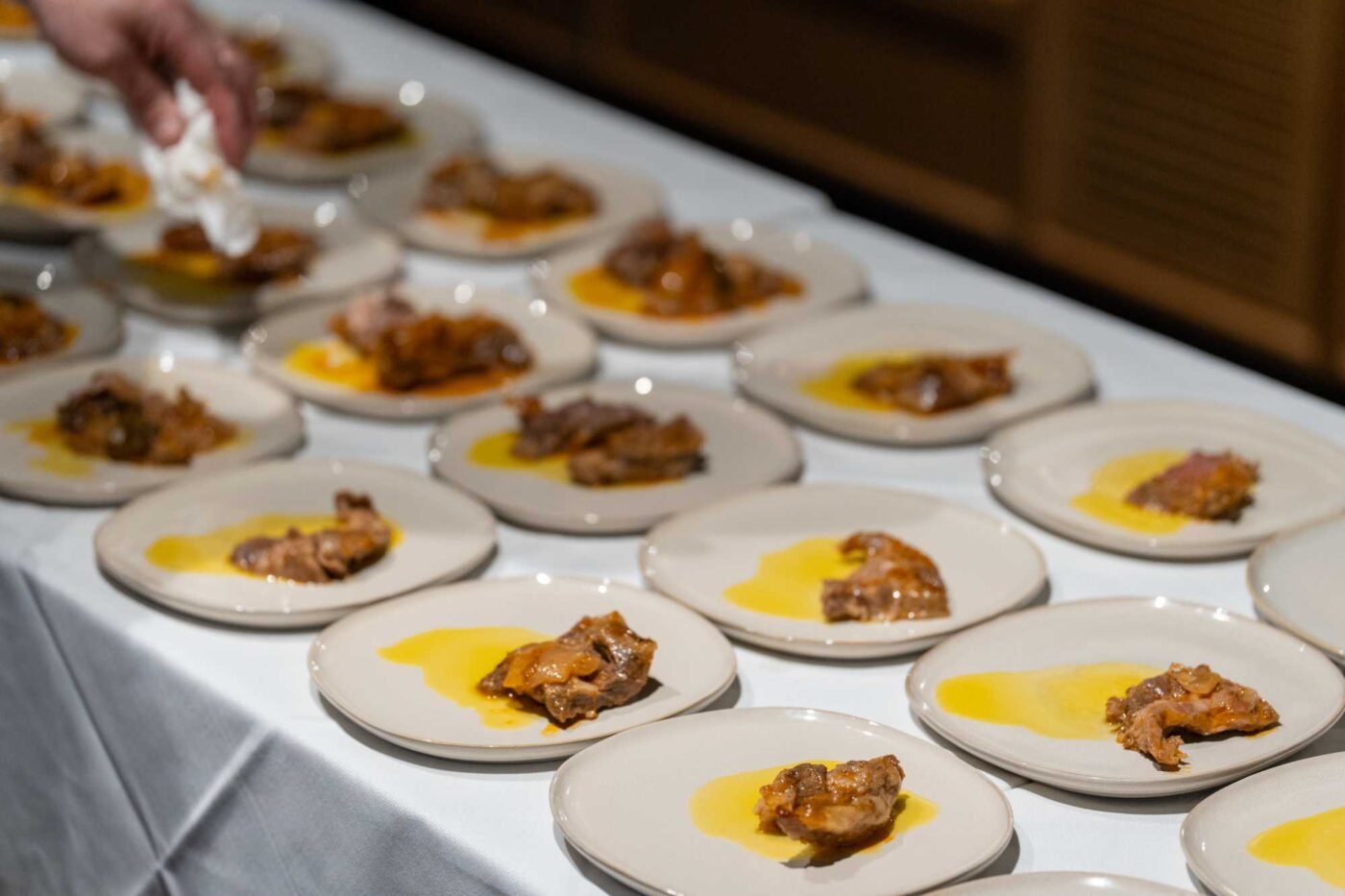
For his (porcine) part, Manuel Maldonado, CEO of Ibéricos Maldonado (Alburquerque, Badajoz) provided the pork and a touch of the dehesa woodland, pointing out to those present that they were “the only company in the sector with a zero mile policy, safeguarding the unique ecosystem that I myself hail from. We have sought out this centuries-old genetic make-up, and gradually fallen in love with both the animal and the surroundings, raising and handling it locally, like an estate wine. In our pursuit of excellence we have gradually learned and discovered the bounties of the ecosystem and the animal itself, which is unique in gastronomic terms. As far as the evolution of the species goes, I have always wondered about not knowing whether the pig took to the sea, or the tuna remained on land, with that sensation that each product is so like the other, with such a common denominator in the fattening process and the marbling that characterises them”.
With wine pairings courtesy of Bodegas Palacios –the great Ricardo Palacios orchestrating the liquid partnership with the white Plácet Valtomelloso 2023 and the red Villa de Corullón 2021– with a prologue and epilogue in the form of a Fino Pando and an Amontillado Jovencito Crujía 2011 from the Williams Humbert sherry winery in Jerez– Joaquín Felipe’s menu was structured over six stages and one dessert.
Culinary festival in 6 stages
The opening snack turned out to be a casserole of bluefin tuna heart, eye and dark meat, cooked with spring onion and garlic, set against pork liver, tongue and heart. Straight after that, a wonderful tartare of tuna inside and side loin, accompanied by Iberian pork loin, appropriately topped with courgette flower. “They are really similar,” the chef explains.
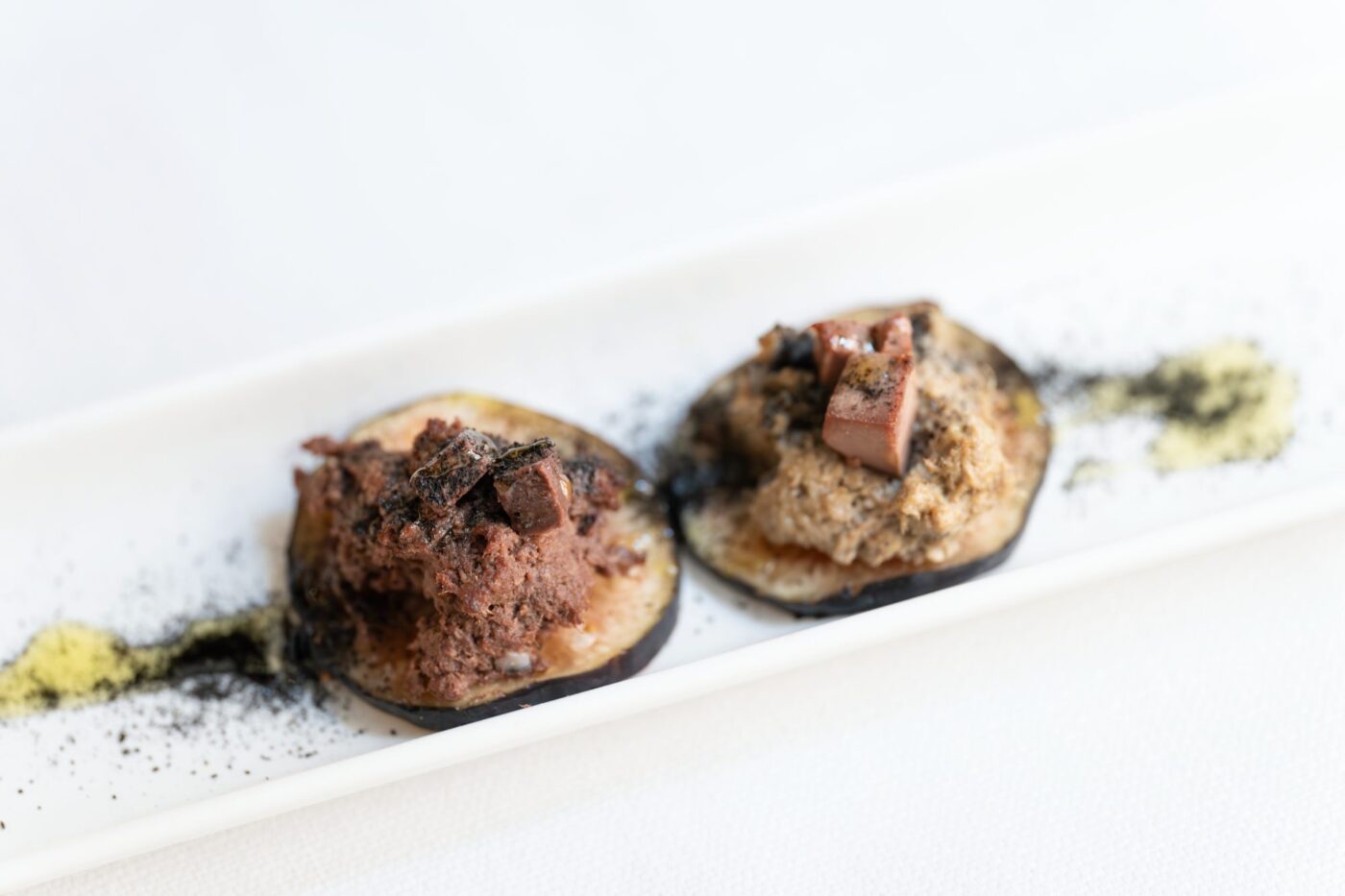
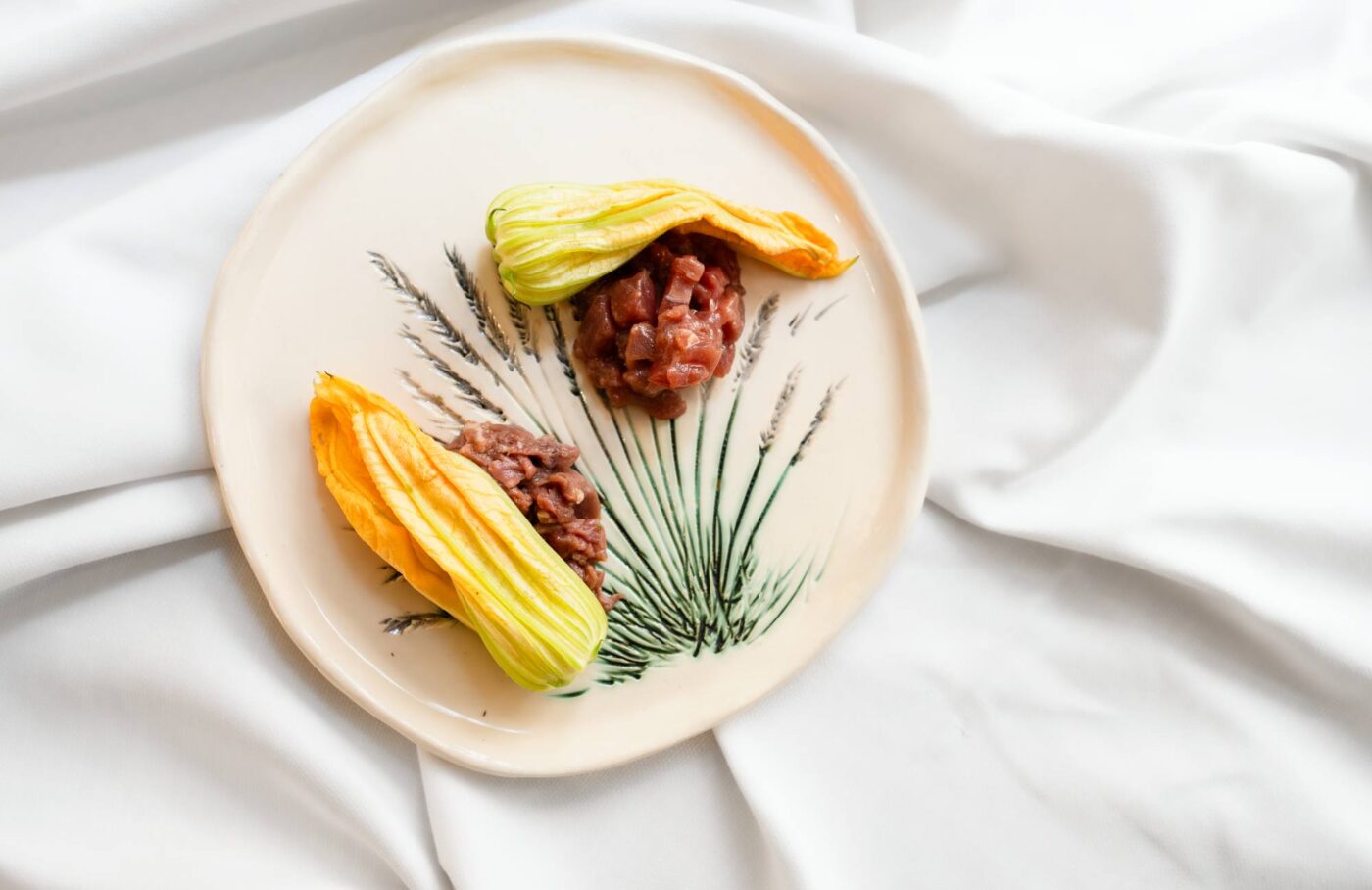
As the third dish, a warm escabeche, with plenty of depth but not difficult to prepare. “The tuna ijada (back cheek) and pork ‘feather loin’ that I did in a mild escabeche proved a challenge. The flavours aren’t so similar, but I think they’re the tastiest,” according to the chef.
Tuna and pig snout come together. An indescribably lingering flavour and umami with each mouthful. Felipe vacuum-cooked the snout at 85 degrees all night, before rolling it up in the raw tuna noten, cooked for 15 minutes at 180 degrees. The stock is made from the remnants of both.
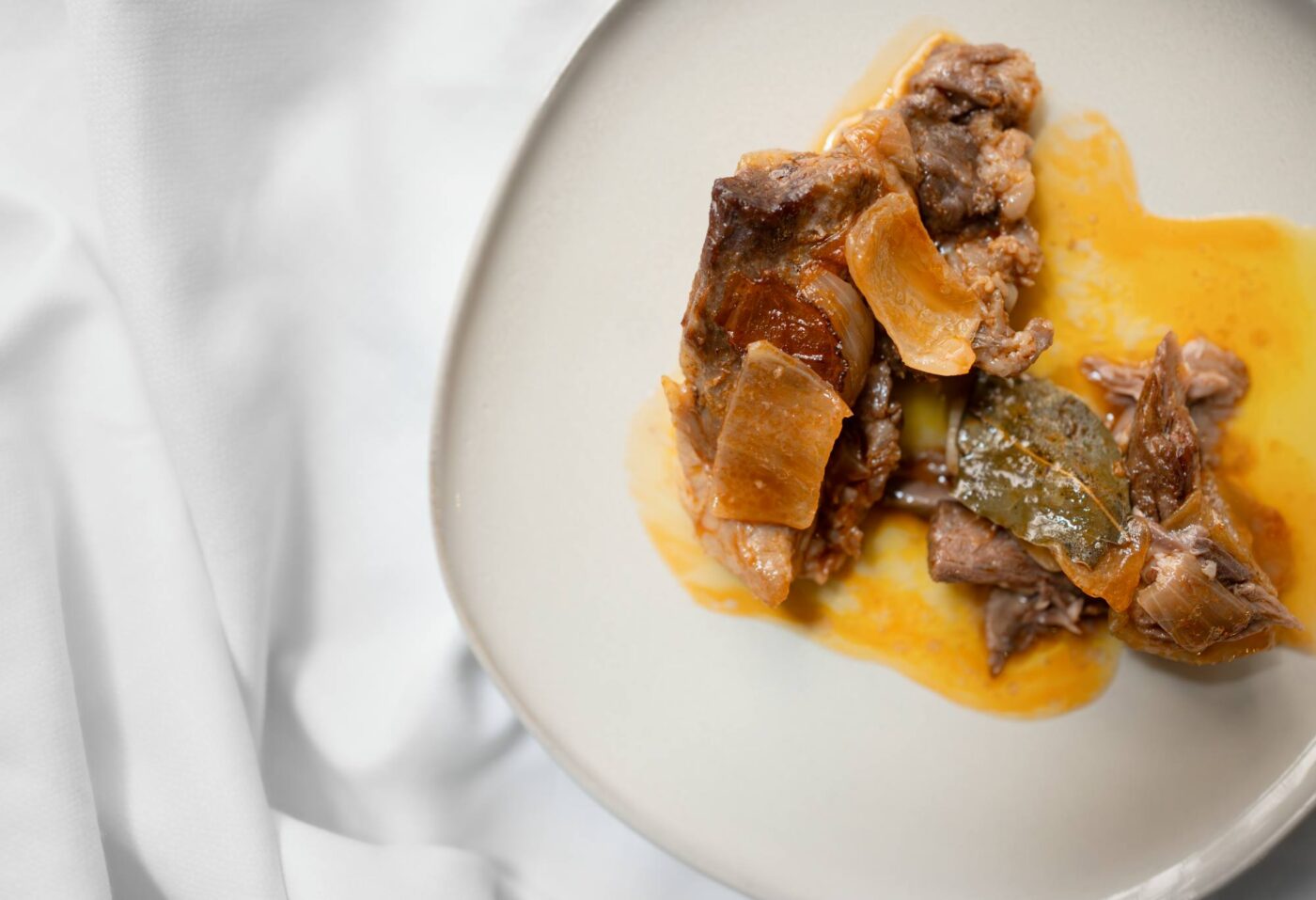
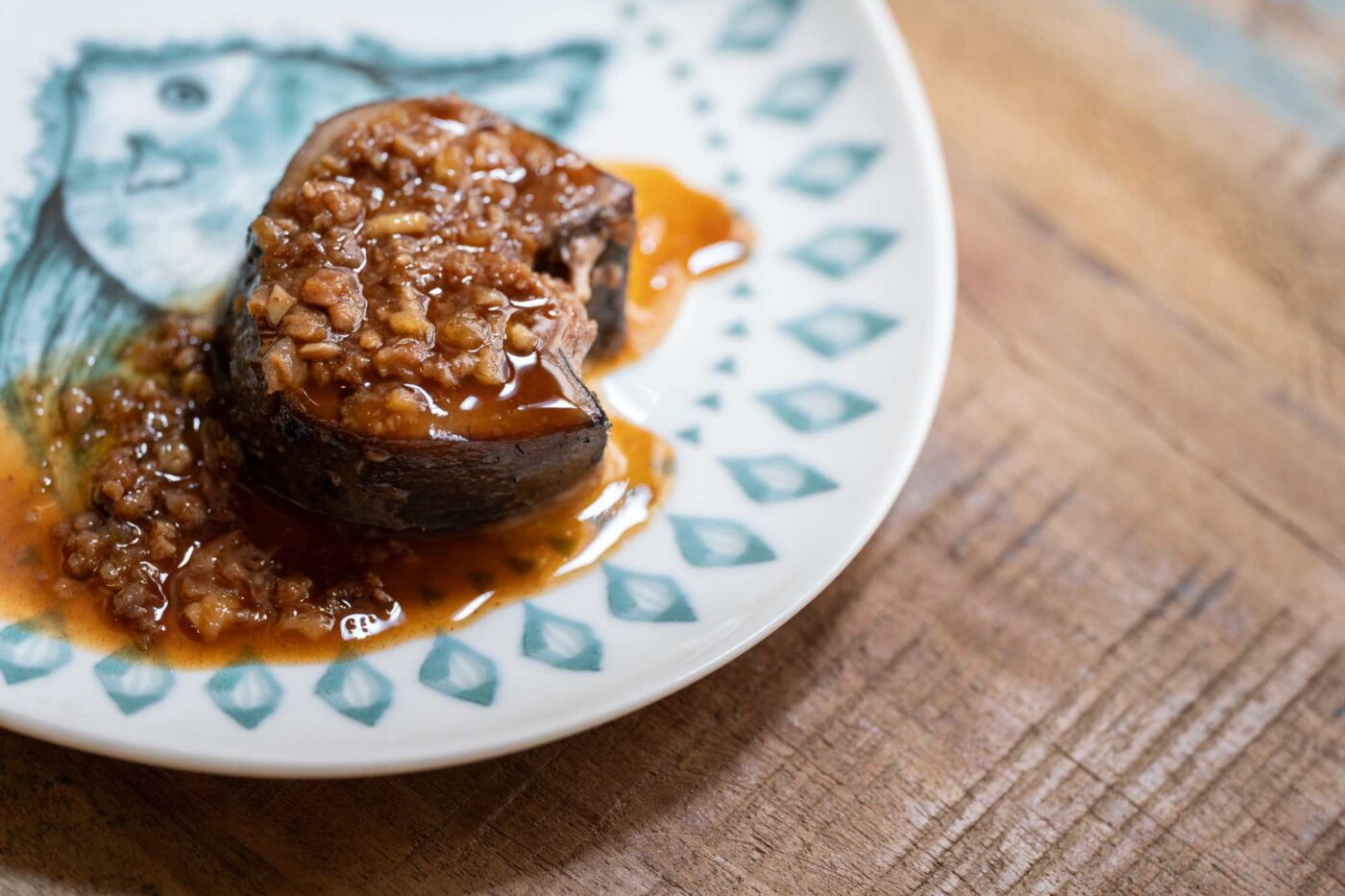
The tuna belly and pork secreto shoulder loin reveal that marbling of fat that diners so love, accompanying us on this journey atop a white asparagus soup and “cous-cous made with crunchy green asparagus, for a refreshing touch”.
The meatballs made from the cheek of both protagonists “serve as surf and turf, with premium milk cap, amanita and black trumpet mushrooms… with summer truffles grated on top”.
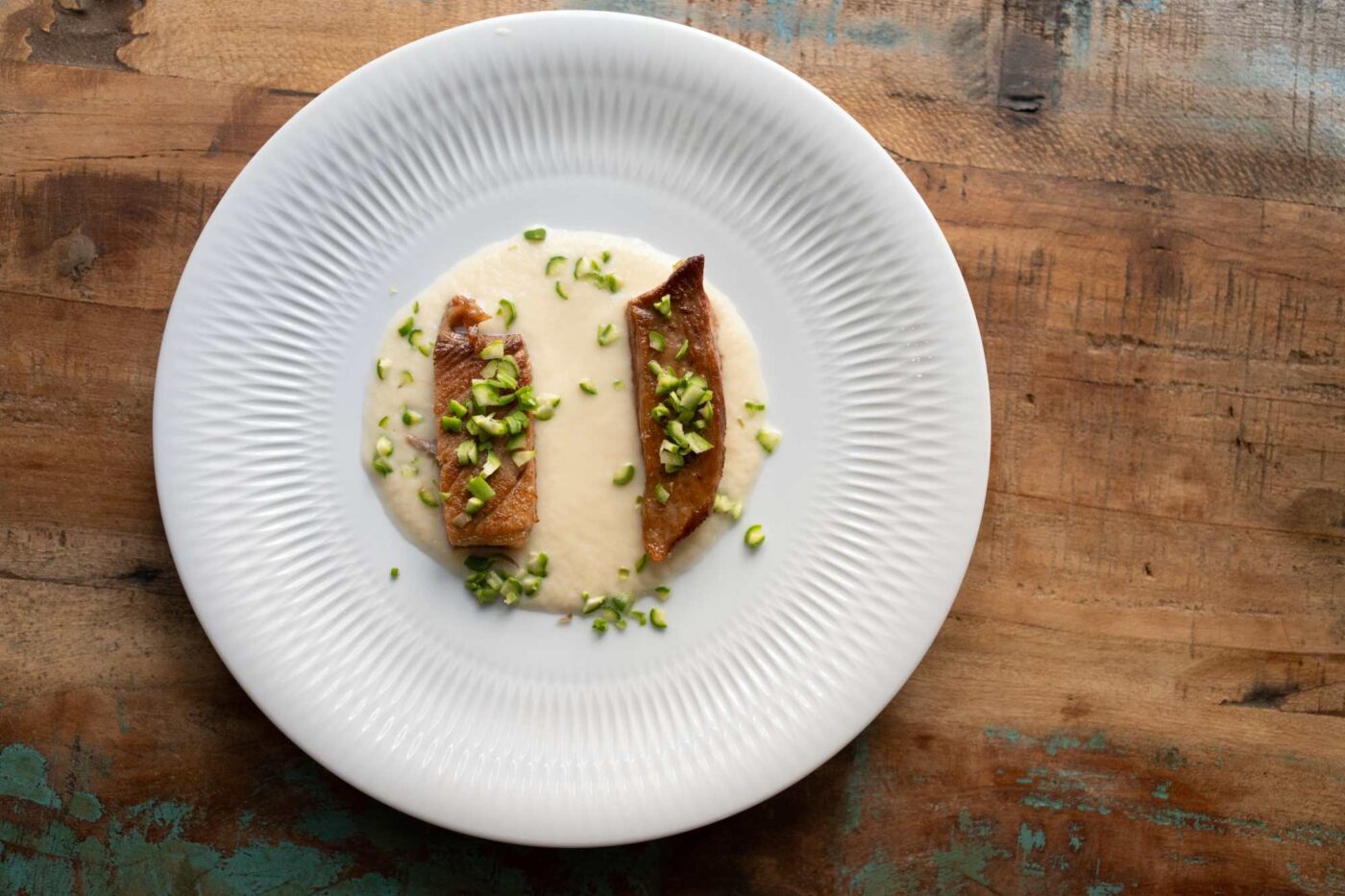
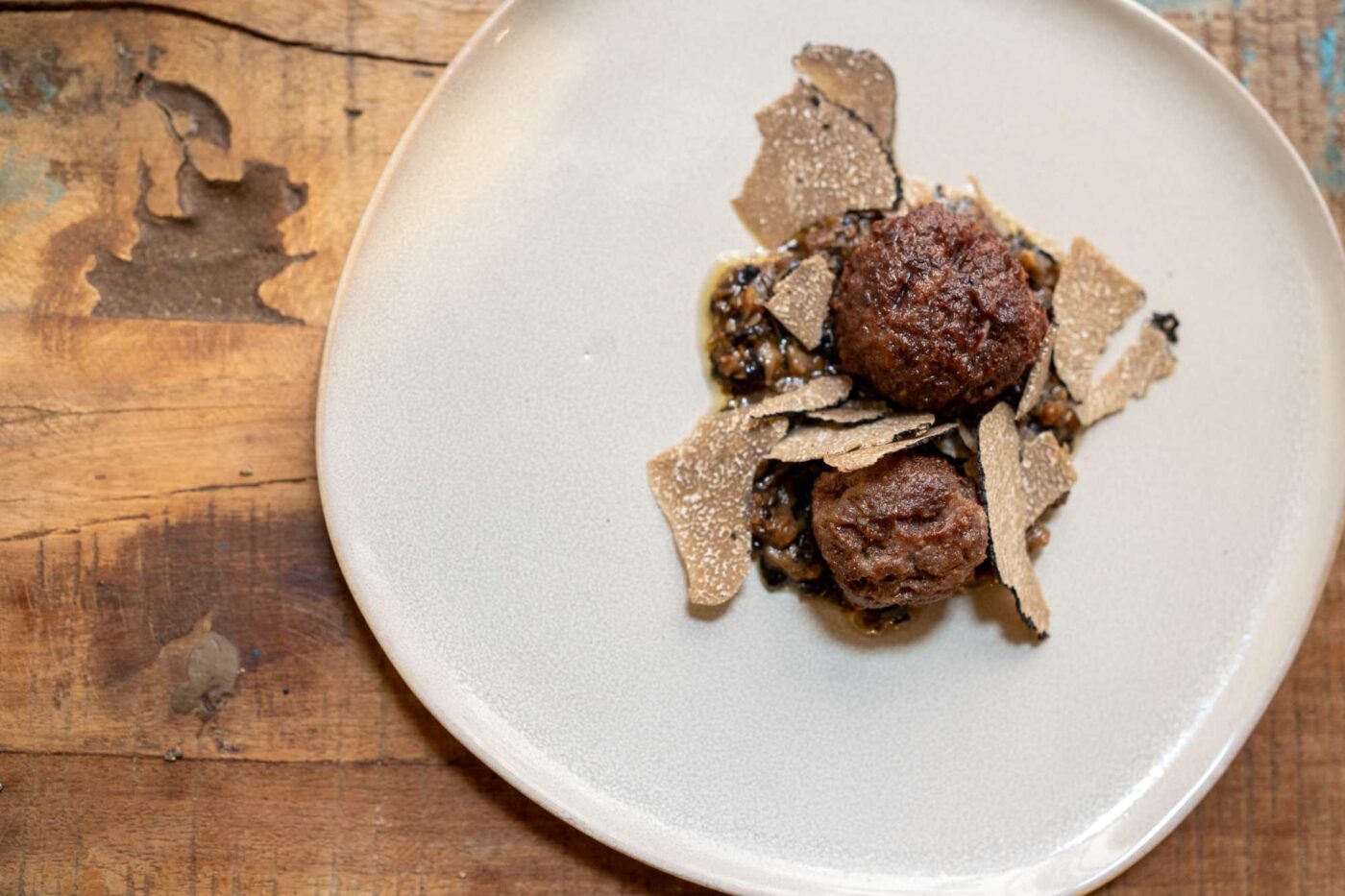
To finish things off and cleanse the palate, a “gintonico”, namely white chocolate cream, a segment of a grapefruit, candied orange and lemon and gin & tonic jelly on filo pastry. This symbiotic menu is available throughout the month of June at Atocha 107 for 65 euros (excluding wine). We end with this reflection by Joaquín Felipe. “There is scope to produce more side-by-side tuna and pork recipes, a whole world to discover. I will be listening to our patrons, who always reach their own conclusions. Some of what we have produced will stay on the menu, I’m sure that some of these dishes will stay there”.
